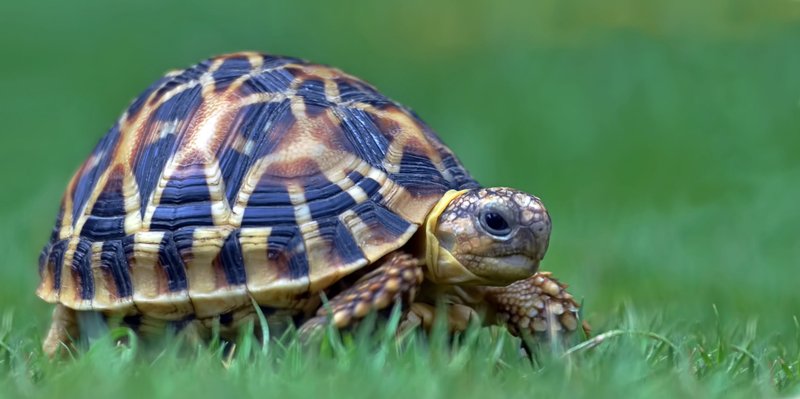
Imagine a world where the Indian Star Tortoise no longer roams the earth. It’s a bit like losing a star from the night sky, isn’t it? The loss would not just affect the species itself but the whole ecosystem it lives in. So, understanding the conservation efforts surrounding this species is crucial—not just for tortoise lovers but for anyone who cares about biodiversity and the health of our planet.
What Makes the Indian Star Tortoise Unique?
The Indian Star Tortoise (Geochelone elegans) is not your average tortoise. This species is renowned for its distinctive, star-like patterns on its shell, which are not just for show—they serve a significant purpose. The patterns can help them blend in with their surroundings, which is vital for avoiding predators. Imagine wearing camouflage to become invisible; that’s essentially what these tortoises do!
In addition to their unique appearance, they are also quite small compared to other tortoise species, typically measuring about 10 to 12 inches in length. These tortoises are native to the dry forests and scrublands of India and Sri Lanka, where they thrive on a diet of grasses, fruits, and flowers. Their habitat plays a vital role in their lifestyle, allowing them to live in harmony with the local environment.
However, their captivating looks and relatively small size have led to a worrying trend: they are often sought after as exotic pets. This demand directly impacts their population in the wild, making it crucial to understand how to protect them.
Why is the Indian Star Tortoise Endangered?
The Indian Star Tortoise is facing several serious threats that have pushed its population to alarming levels. The primary reason for their endangerment is illegal poaching. This tortoise is highly valued in the pet trade, resulting in thousands being captured annually. Many of these tortoises do not survive the harsh conditions of transport and captivity, leading to further declines.
Additionally, habitat loss is another critical factor. As development projects expand—such as agriculture and urbanization—much of their natural habitat is destroyed. With fewer places to live and less food available, these tortoises struggle to survive. This loss not only affects the tortoises directly but also disrupts the whole ecosystem they are part of.
Lastly, climate change poses a significant threat. Altered weather patterns can impact the vegetation they rely on for food, leading to further challenges for their survival. It’s like a domino effect; when one thing falls, so does another.
The Role of Conservation Organizations
Many organizations around the globe are dedicated to protecting the Indian Star Tortoise. Conservation efforts focus on habitat preservation, anti-poaching initiatives, and educating the public about the importance of these tortoises. Groups like the Wildlife Protection Society of India are actively working to enforce laws against poaching and trade.
These organizations also conduct research to track wild populations and understand their needs better. With this information, they can implement better strategies for conservation. It’s a bit like being a doctor for the tortoises; you need to know what’s wrong before you can help!
Education is another vital piece of the puzzle. By raising awareness in local communities about the importance of preserving these tortoises, organizations aim to reduce the demand for them as pets. When people understand the role these tortoises play in the ecosystem, they’re more likely to support conservation efforts.
What Can You Do to Help?
Feeling inspired to take action? There are many ways to support the conservation of the Indian Star Tortoise, even if you can’t go to India or Sri Lanka. Here are a few suggestions:
- Spread Awareness: Talk about the challenges the Indian Star Tortoise faces. Share articles on social media to help raise awareness.
- Support Conservation Organizations: Consider donating to organizations that are working to protect these tortoises and their habitats.
- Avoid Exotic Pet Trade: If you’re considering getting a pet, opt for those that are bred humanely and not taken from the wild.
- Participate in Local Conservation Efforts: Join clean-up events or local wildlife protection initiatives to support biodiversity in your area.
Every little action counts! Just like the stars in the night sky seem small, together, they create a beautiful sight. Your efforts can contribute to a larger movement for conservation.
Future Prospects for the Indian Star Tortoise
The future of the Indian Star Tortoise hangs in the balance. While their populations have declined, there is still hope. Continued conservation efforts show promise, and awareness of the issues they face is growing. Nations are beginning to recognize the importance of biodiversity, leading to stricter regulations on wildlife trade.
Innovative projects, such as breeding programs and habitat restoration, are being developed. Imagine a rescue mission, not for a person but for tortoises. These programs aim to increase the population and reintroduce them back into their natural habitats, giving them a second chance at life.
The journey is long and complex, but every effort matters. With collaboration between governments, organizations, and individuals, the Indian Star Tortoise has a better chance for survival.
The plight of the Indian Star Tortoise is a reminder of the interconnectedness of life. When one species suffers, it can signal a larger issue within our ecosystems. By understanding the challenges these tortoises face and actively supporting conservation efforts, we can help ensure that they will continue to grace our planet with their unique beauty.
So the next time you see a starry sky, remember that each star has a story, just like the Indian Star Tortoise. Let’s work together to keep their story alive. After all, keeping our planet diverse and vibrant is something that benefits us all.
